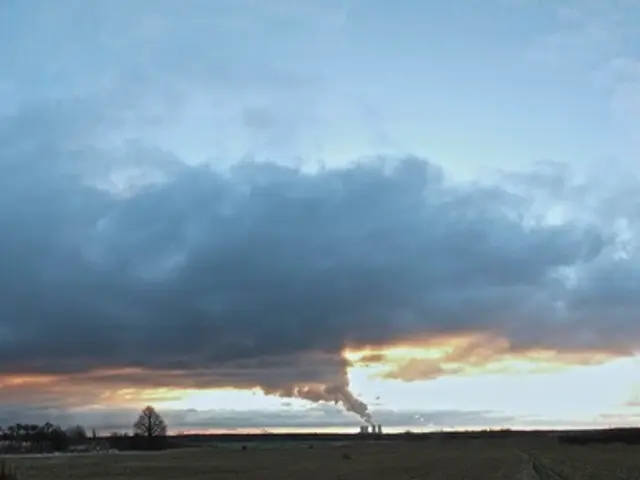Urbanization Alters Plant Growth: A Look at Artificial Light and Higher Temperatures
Urban Flora Blossoms Earlier and Lasts Longer: Investigating the Reasons Behind This Phenomenon in Urban Settings
Cities, bathed in the glow of street lamps, neon signs, and shops open late into the night, have a profound impact on the natural world, according to a study. This impact can be seen in the growth patterns of plants, with urban areas experiencing earlier and longer growing seasons than their rural counterparts.
Interesting Fact: Did you know that the heat waves plaguing many districts are often due to the excessive water consumption? Half of all districts are using more water than needed, leading to depleted groundwater levels [Source: dpa]
Street lights, signs, shops, and buildings contribute to artificial urban lighting, which delays the end of the natural autumn growing period of plants by an average of about eleven days. On the flip side, this combination of artificial light and higher urban temperatures speeds up the growth period, causing it to start about 12.5 days earlier than in rural areas [Source: ntv.de]
Researchers from Vanderbilt University, led by Lin Meng, sought to understand more about how artificial light and higher heat radiation affect plant flowering, growth, and the timing of leaf changes. The findings were published in the journal, "Nature Cities."
The study analyzed data from 428 cities in the Northern Hemisphere from 2014 to 2020. They found that the growing season starts earliest in European cities, followed closely by Asian cities, with North American cities having the brightest lighting.
Although all climate zones are influenced by artificial light, it has a more significant impact on delaying the vegetation period than temperature. The type of artificial lighting also seems to play a role, as traditional lamps are increasingly being replaced by energy-efficient LEDs. LEDs emit a pronounced blue light that could impact plant development, but this area requires further investigation.
However, in some European cities with higher temperatures, researchers observed a shorter growing season due to water scarcity. Higher temperatures during the summer and early autumn can lead to an extension of the growing seasons, but they can also reduce water availability, causing premature leaf aging and accelerating autumn developments.
The influence of artificial light and higher temperatures on plant growth in cities is intricate and multi-faceted. While warmer temperatures can accelerate plant growth, artificial light plays a pivotal role in extending the growing season, and the adoption of LED technologies could impact these dynamics due to their energy efficiency and tailored light outputs.
Community policy should consider the impact of urban lighting on plant growth, as the combined effect of artificial light and higher urban temperatures affects the start and duration of growing seasons, with LED lights, in particular, requiring further study for their potential influence on plant development. Furthermore, the environmental-science community needs to address the increasing water consumption in cities, as excessive water usage leads to depleted groundwater levels, contributing to climate-change challenges such as heat waves and water scarcity, which in turn affect health-and-wellness and the overall environment.








